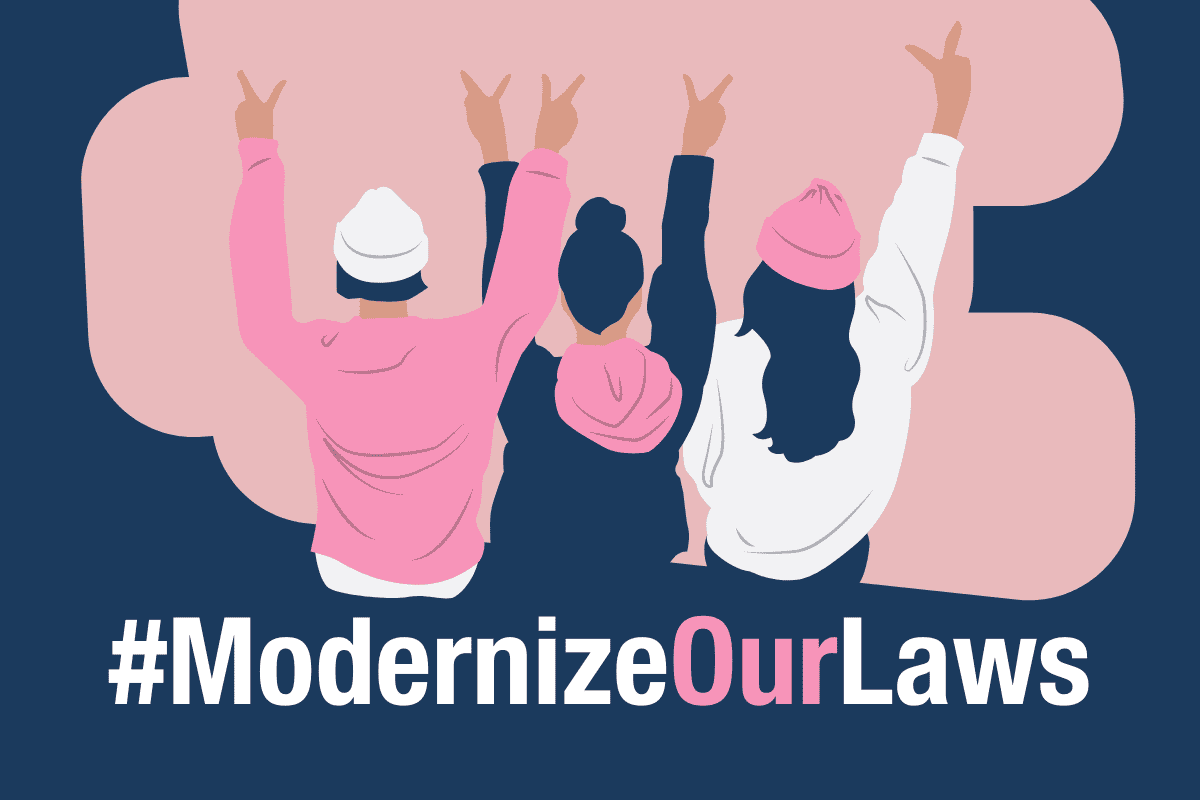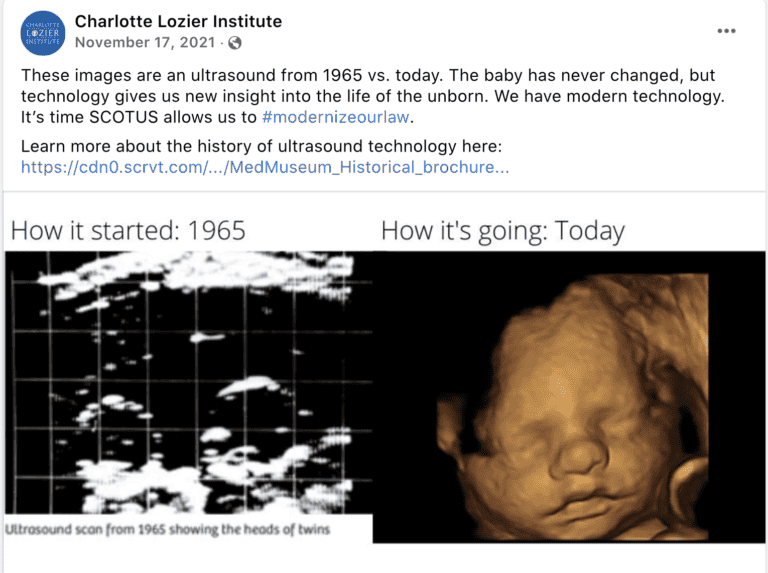Roe v. Wade is undoubtedly the most popular abortion case in U.S history. However, it is also one of the most misunderstood. Roe v. Wade was not the beginning of abortion in the United States. Since it was ultimately overturned through a 5-4 decision in the Supreme Court case Dobbs v. Jackson Women’s Health Center, it still doesn’t mean abortion is entirely eradicated.
What is Roe v. Wade?
The case of Roe v. Wade began in 1970. A young woman from Texas, Norma McCorvey, wanted an abortion. McCorvey (a.k.a. Jane Roe) filed a lawsuit in Dallas, Texas, challenging their strict abortion laws. At the time, Texas only allowed for abortion in cases where the woman’s life was in danger. McCorvey lost the case in Dallas. She then appealed to the Supreme Court.
In 1971, Roe v. Wade‘s oral arguments were presented to the Supreme Court. By this time, McCorvey had already given birth. McCorvey’s lawyer, Sara Weddington, argued that McCorvey’s case was still relevant. Weddington pointed out that other women still faced circumstances similar to McCorvey’s.
Concerning the Texas abortion laws, Weddington presented several issues to the Court including:
- The Texas law was too vague in defining medically necessary abortions.
- This law was too vague in defining preborn life.
- The law imposed several double standards when treating abortion as a crime.
- Texas provided little support for women facing challenging pregnancies (untimely pregnancies, disabilities, special needs, etc.).
What Did Roe v. Wade Do?
In 1973 the Supreme Court ruled in favor of McCorvey in a 7-2 majority vote. However, the Court recognized its responsibility to protect the lives of both “potential life” and women. Under Roe, a set of abortion restriction guidelines were created.
Since a woman and her preborn child share a unique, 2-in-1 relationship, the weight of each life in the abortion decision depends on certain conditions. These guidelines are based on factors such as the trimester of the pregnancy, the condition of the pregnancy and the capabilities of maternal-fetal medicine at that time. Conditions as broken down by trimester were as follows:

Abortion in the First Trimester
The first trimester includes week 0 to week 13 of the pregnancy. Under Roe, state governments cannot interfere in an abortion decision. At that time, the abortion choice is between a woman and her doctor.
Abortion in the Second Trimester
The second trimester of a pregnancy runs from week 14 to week 26. During the second trimester, states may regulate abortion. However, any restriction should take into account any concerns for the mother’s health.
Abortion in the Third Trimester
The third trimester is the last and final semester of pregnancy. Typically, this trimester lasts from week 27 to week 40. During the third trimester, states may regulate or ban abortion entirely. Once again, regulations should account for the life and health of the mother.
What Was Wrong With Roe?
The ruling of Roe v. Wade factored medical consultation into the abortion conversation. It also considered the wellbeing of both women and the “potential life” within them. At a glance, Roe doesn’t seem all that bad. Sadly, the devastating effects of Roe would only manifest in the decades to come.
1. Bolton v. Doe and Others
Following Roe, new court cases redefined what it meant for a pregnancy to be detrimental to the mother’s health. Bolton v. Doe was one of these cases. The ruling of Bolton v. Doe (1973) allowed for the abortion of babies for nearly any reason. Justice White described this injustice best in a comment made during the case.
Justice White - Doe v. Bolton, 410 U.S. 179 (1973)
“The Court, for the most part, sustains this position: during the period prior to the time the fetus becomes viable, the Constitution of the United States values the convenience, whim, or caprice of the putative mother more than the life or potential life of the fetus; the Constitution, therefore, guarantees the right to an abortion as against any state law or policy seeking to protect the fetus from an abortion not prompted by more compelling reasons of the mother…
With all due respect, I dissent. I find nothing in the language or history of the Constitution to support the Court’s judgment. The Court simply fashions and announces a new constitutional right for pregnant mothers and, with scarcely any reason or authority for its action, invests that right with sufficient substance to override most existing state abortion statutes.”
These words were delivered from Justice White after the ruling. In short, Justice White called out the unconstitutionality of the ruling. Bolton awarded frighteningly biased rights to the mother over the preborn child. White also added that the ruling went as far as to create new rights specifically for women. This ruling, and similar rulings from other abortion cases, all but nullified the attempt the Court made to protect “potential life” during Roe v. Wade.
2. Roe v. Wade: Scientifically Outdated
As previously mentioned, the statutes of Roe v. Wade were based on the knowledge of maternal-fetal medicine of the 1970s. Listening to recordings of Roe‘s oral arguments, nearly any attempt to identify the beginning of life in the womb is met with, “I don’t know.”
This lack of knowledge concerning early preborn life was probably the greatest contributor to Roe‘s conditions. Since then, our understanding of preborn life and pregnancy health has come a long way. This is the primary reason why the pro-life community continues to advocate for the Court to #ModernizeOurLaws, even in a post-Roe world.

Unfortunately, these advancements aren’t often brought up when discussing abortion. And being unaware of modern maternal-fetal medicine isn’t limited to the general public.
In the recent Dobbs v. JWHO oral arguments, one justice commented that there had been no advancements in technology or medicine that would impact the Court’s view of abortion. This statement is grossly inaccurate.
Advancements in maternal-fetal medicine have nearly eradicated truly “medically necessary” abortions. Some areas of medicine that have drastically improved since the days of Roe include:
All of these advancements have played a role in allowing women to choose life for their babies where the “medically necessary” abortion might have once felt like their only option.
3. Abortion Out of Context and Abused
The idea behind Roe‘s ruling was that abortion would be safe, legal and rare. However, empowered by pop politics, Roe v. Wade, and lesser-known abortion cases, an oppressive and unchecked industry emerged. Even after Roe was overruled, the abortion industry still advocates for unrestricted abortion access nationwide. This advocacy comes despite the original intentions of Roe, to help doctors serve patients and protect the wellbeing of both the mother and her baby.
The latest in abortion technology is the abortion pill. The abortion pill is a two-pill procedure. In summary, its purpose is to starve a pregnancy of vital nutrients before then forcing early labor. Today, in certain states, the abortion pill can be obtained without the evaluation of a doctor. This can be highly dangerous to women, given that the symptoms of the abortion pill mimic those of a ruptured ectopic pregnancy.
In states where abortion is now illegal due to the recent Dobbs v. JWHO decision, doctors from states where it continues to be legal cannot prescribe the abortion pill remotely. Those who do so will lose their license, and may even face criminal charges. But there are loopholes. For instance: if a woman were to travel to a state with less or no abortion restrictions and meet with a doctor through telemedicine, she can then have the pill mailed to an address in said state.
In any circumstance, when we compare the actions of today’s abortion industry titans to the motivations of Roe, the differences are astonishing. Under the guise of women’s empowerment, the industry is actively taking both the insight of doctors and the considerations for “potential life” out of the abortion decision.
4. Genetic Discrimination
It is no secret that the history of abortion is stained with racism, sexism and ableism. Today, the abortion industry continues to profit from the genetic discrimination of those whose lives they take. These issues have worsened as modern medicine can now identify the specific genetic traits of preborn children.
In some countries, like Iceland, nearly every child with Down syndrome is aborted. Rather than finding better treatment or a cure for these patients, their entire demographic has been nearly eradicated. Similarly, in countries like China and India, genetic discrimination manifests as sex-selective abortion. Sadly, babies aborted based on their sex are usually girls because of certain cultural preferences and pressures. We’d be naïve and narrow-minded to assume that the same prejudice never takes place in the U.S.
5. Abortion As "Healthcare"
Lately, the cry of passionate pro-abortionists has become, “abortion is healthcare!”
Many OB-GYNs readily object to this claim. For example, the AAPLOG is the American Association of Pro-Life Obstetricians and Gynecologists. AAPLOG has over 7,000 members and a board of directors made of mostly female doctors. Their mission is to equip practitioners with evidence-based rationale for defending the lives of both the pregnant woman and her preborn baby.
Abortion is not healthcare. As physicians and other healthcare professionals, we know that when we care for pregnant women, we are caring for two distinct patients. Our duty is to protect and preserve the lives of the patients whom we care for. Our patients place their trust in us to recommend what is best for them, regardless of current political or cultural trends.
American Association of Pro-Life Obstetricians and Gynecologists
More information on why these physicians oppose abortion as healthcare can be found here.
In a Post-Roe World, Are We Ready to Fill the Gap?
On July 24, 2022, the Supreme Court overturned Roe v. Wade. Afterwards, a common concern being voiced from the pro-choice community is that, now that Roe is gone, women will suffer. Women will be left with no support or resources for handling unexpected, untimely or complicated pregnancies.
Thankfully, evidence suggests otherwise. Today, there are many abortion alternatives which empower women while protecting preborn life. In other words, both current culture and the medical community now have the power to accomplish the mission that Roe v. Wade failed to achieve.
A few of these life-saving resources include pregnancy centers which provide real healthcare to women, diagnosis training and prenatal hospice for coping with adverse prenatal diagnosis, and birth mother-centric adoption options.
Pregnancy Centers
There are over 2,500 pregnancy centers throughout the United States. Their services range from free pregnancy tests and ultrasounds to parenting classes and adoption referrals. Furthermore, many people working at these centers have experienced either abortion or unexpected pregnancy first-hand. This could be why many centers also offer resources for post-abortive support.
Diagnosis Training and Prenatal Hospice
For years under Roe, our culture developed a dehumanizing view of children with disabilities and special needs. For example, even today, many doctors follow up an adverse prenatal diagnosis with the offer to abort.
Thankfully, change is coming. Recently, the American Academy of Pediatrics announced a big change to their guidelines on how doctors should discuss certain diagnoses. For instance, when it comes to diagnosing Down syndrome, “Families are to be congratulated (meaning no more apologizing for a child’s existence), to refer to the baby by name, and to make sure a support person is there for the parents during the discussion.”

Additionally, patients now have access to various dignity-conserving programs that bring hope and healing to families in need while protecting preborn life. Programs like prenatal hospice offer promising alternatives to abortion in these areas.
Adoption Options
In the time of Roe, the public treated adoption as something shameful for both the child and the birth mother. Today, our culture celebrates adoption! Birth mothers now can parent or place their child in an adoptive family. Furthermore, mothers can choose between open or closed adoptions. And, when considering the adoption option, birth moms call the shots!
A birth mother can place her child for adoption with as much or as little involvement as she chooses. Would she like to meet a family before placing her child with them? She can do that. Would she prefer to place her baby in a Safe Haven? She can do that as well. And there’s no shame in doing either.
From the pro-lifer’s perspective, adoption is a choice that should be just as healthy for mom as it is for baby.
What Happens Now That Roe v. Wade is Overturned?
Just because Roe v. Wade is overturned, abortion has not disappeared altogether. Neither will abortion access. Instead, the decision to outlaw or permit the abortion procedure has now fallen to state governments. For this reason, some states have “trigger laws” in place. These laws are designed to “trigger” only if a particular verdict is reached. Some states have already become severely pro-abortion, while others became sanctuary states for the preborn. States with laws that were triggered after Roe was overturned include Arkansas, Idaho, Kentucky, Louisiana, Mississippi, Missouri, North Dakota, Oklahoma, South Dakota, Tennessee, Texas, Utah and Wyoming.
A more detailed list of pro-life states, their stance on abortion and their trigger laws can be found here: 26 States Ready to Protect Preborn Human Life
Was Roe v. Wade Overturned in 2022?
Was Roe v. Wade overturned in 2022? Yes. Questions as to if Roe had been overturned began circulating in 2021 as the oral arguments were presented for Dobbs v JWHO. Roe v. Wade was overruled on June 24, 2022, in a landmark 5-4 decision. Those who voted for overturning the nationwide legalization of abortion are Justices Thomas, Alito, Gorsuch, Kavanaugh and Barrett. Those who voted to uphold it are Justices Breyer, Sotomayor, Kagan and Roberts. Justice Roberts voted to uphold Roe and uphold the Mississippi ban on abortion the case originally presented, making the overall case ruling of Dobbs v. JWHO a 6-3 decision.
What Do We Do Now?
Abortion is often a symptom of other life issues: poverty, fear, loneliness and more. Knowing this, we can take action to eradicate abortion by meeting the needs of the abortion-vulnerable within our local communities. Knowing how to better serve the at-risk women of our communities begins with us keeping the greatest command God has ever given his followers, to love God and to love others as he has loved us — fearlessly, selflessly and unconditionally.

For more information on what you can do to weaken Roe and defend life on the local level, check out these articles:





















